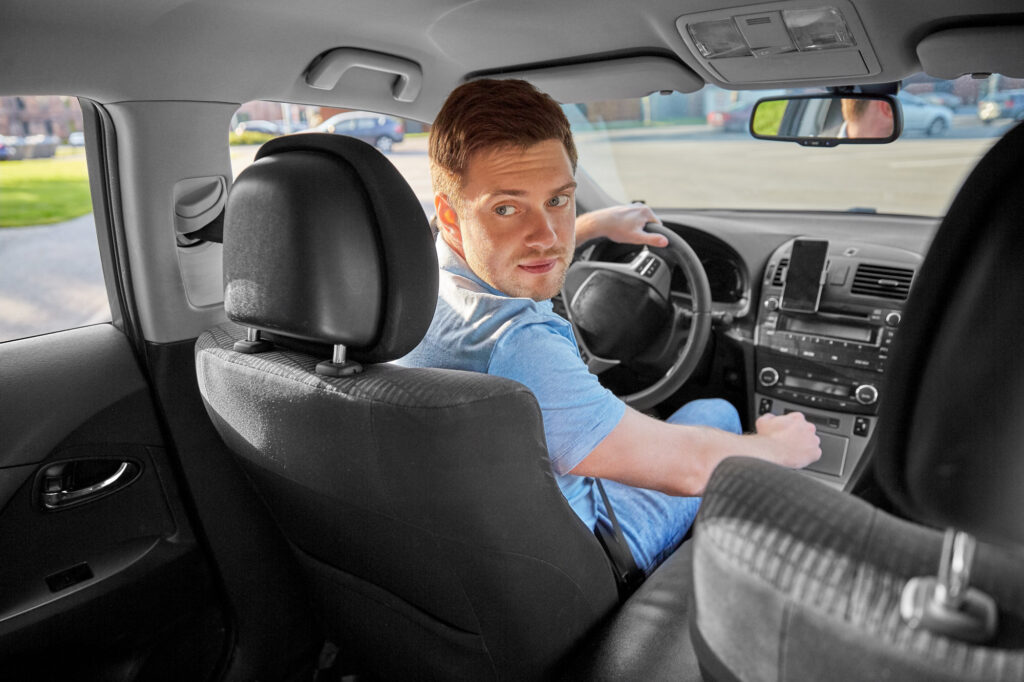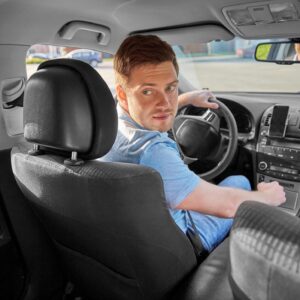Driving is a skill that can take quite some time to master. Aside from practicing the proper gear shift techniques and safe stopping distances, you can’t call yourself a full-fledged driver if you don’t know how to park.
It’s common knowledge that there are several ways to park, and the type of space will dictate how to position your vehicle properly.
For instance, parallel parking is done when the space requires your vehicle to stay parallel to the curb. Meanwhile, you can forward or reverse park when squeezing between two vehicles.
Over the years, there’s been some debate about whether it’s better to back into a parking space or go in head first.
While both techniques are acceptable, there are a few things that set them apart from each other in terms of difficulty and safety.
Debunking the Myths Surrounding Reverse Parking
For some drivers, reverse parking takes up too much time, disrupting the flow of traffic. But in reality, it can save a few valuable minutes when you’re ready to get out of the parking lot.

There’s also the misconception that reverse parking is riskier than forward parking.
For new drivers, backing into a parking space might feel a bit uncomfortable at first because of the increased risk of collision.
But once you get the hang of it, you’ll realize that reverse parking gives you a clearer view of your surroundings when it’s time to leave your spot. This technique can also help you avoid pedestrians and other obstructions with ease.
The Truth About Parking Head First
Forward parking might seem like the most logical choice when you’re in a hurry to get out of your vehicle. And while this maneuver is a bit faster to accomplish than reverse parking, you’ll take up too much time backing out of your spot when it’s time to leave.
Backing out into the flow of traffic is also more dangerous compared to going out of the parking spot head first.
When backing out of the parking lot, your rearview mirror might not show pedestrians passing by, and you might end up hitting them.
The Verdict: It’s Better to Back Into a Parking Space
Backing into a parking space is better than going in head first, and there are several studies to back this claim.
According to research, 76% of Americans park their vehicles nose first instead of backing in.
In a recent study by the National Highway Traffic Safety Administration (NHTSA), as many as 12,000 vehicle non-occupants were injured and 284 were killed in a year by vehicles backing out of a parking spot.
The National Safety Council has also recorded over 50,000 collisions in parking lots and garages each year, which led to over 500 fatalities and 60,000 injuries.
In another study conducted by researchers from the University of North Texas, drivers who back into a parking space are less likely to be involved in an accident compared to those who park nose first.
It’s also believed that reverse parking is safer than parallel parking. This is because there’s a tendency for the right front tires to hit the curb and the rear tires to hit something else, which is usually another vehicle.
If done incorrectly, parallel parking can damage a vehicle’s suspension system. It can also lead to an accident if another vehicle hits you from behind while you’re trying to exit.

How to Back Into a Parking Space the Right Way
If you’re one of the many drivers who feel intimidated by the reverse parking technique, don’t worry! Here’s a step-by-step guide on how you can back into a parking space like a true professional.
Step 1: Find an empty parking spot. If you’ve only begun to practice reverse parking, it’s better to find a spot where there are no other cars nearby to reduce the risk of collision.
You can also choose a space where there’s only one car on one side.
Step 2: Drive in front of the parking space, and make sure that your rear bumper is slightly in front of the space.
Step 3: Activate the hazard flashers to alert other drivers that you’re about to back into a parking space.
Step 4: Check your surroundings and scan the area for oncoming vehicles. Use your mirrors to check for nearby pedestrians.
Step 5: Shift your vehicle into reverse, and turn the steering wheel to the right or left, depending on which side you’re backing into.
Step 6: Continue moving backward as you enter the parking space.
Step 7: Straighten the steering wheel once your vehicle is aligned with the parking space. Then, continue backing into the spot until you’re no longer obstructing the aisle. Be careful of hitting the curb behind you.
Step 8: Shift your vehicle into park.
Need More Help? Try Installing Reverse Parking Sensors and Cameras
If you’re still having trouble back into a parking space even after practicing multiple times, you might want to try installing reverse parking sensors and cameras to help you out.
Reverse parking sensors and cameras help you eliminate blind spots from the rear view and side mirrors. They essentially tell you when you’re about to hit something, which is your cue to stop.
Parking sensors can either be ultrasonic or electromagnetic.
Ultrasonic parking sensors emit ultrasonic waves behind your car. These waves bounce off any obstructions and back to your vehicle. The faster the wave returns, the closer the object is to your vehicle.
The speed of these waves often manifests in the beeping sound you hear from your vehicle when the gear is in reverse.
Electromagnetic sensors also have the same principle. The only difference is that they emit electromagnetic waves instead of ultrasonic ones.
Any form of obstruction behind your car will disrupt the electromagnetic field in that area, prompting your vehicle to create a warning sound.
Any information provided on this Website is for informational purposes only and is not intended to replace consultation with a professional mechanic. The accuracy and timeliness of the information may change from the time of publication.




















